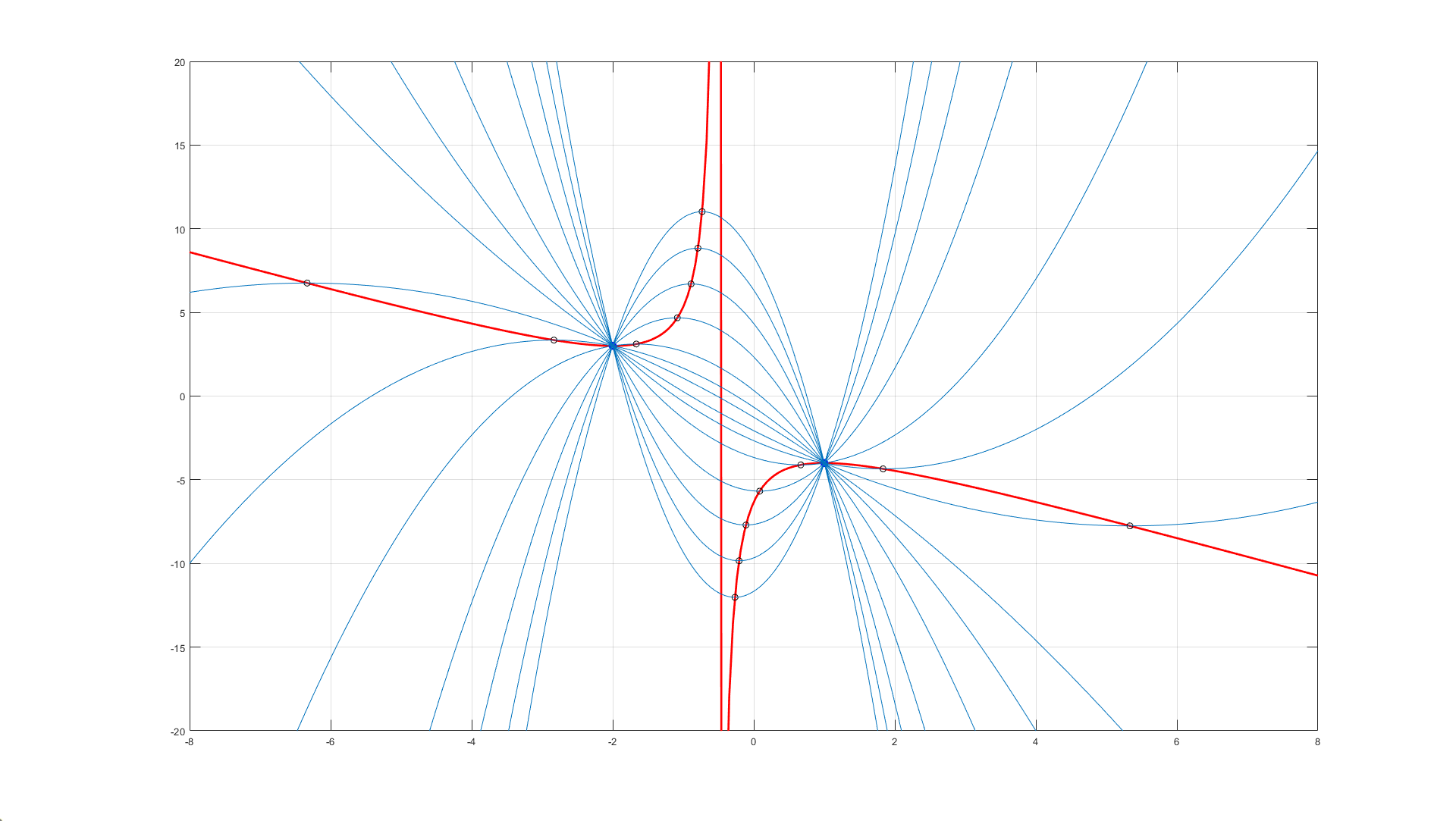



February 25, 2022
From Sean Sweeney, Chris Nho and Eli Luberoff comes a Classic that is for anyone who ever thought even more deeply about functions in high school algebra.
Suppose the two distinct points are anywhere on the coordinate plane. If I tell you that a parabola with a vertical line of symmetry passes through those two points, where on the plane could that parabola’s vertex be?
A hyperbola
Explanation:
Let us consider two arbitrary points on the 2D Cartesian Plane: \((x_1, y_1)\) and \((x_2, y_2)\), and the function representing a parabola with vertex at \((h, k)\), we would have the following two equations:
\begin{align} y_1 &= a(x_1 - h)^2 + k \\ y_2 &= a(x_2 - h)^2 + k \\ \end{align}
The aim is to write \(k\) in terms of \(h\), whereby we would obtain the following by eliminating \(a\):
\begin{align} k &= \frac{y_1 \left(\frac{x_2-h}{x_1-h}\right)^2 - y_2}{\left(\frac{x_2-h}{x_1-h}\right)^2 - 1} \\ \end{align}
The above equation is actually an equation of a hyperbola.
The video below shows how vertices of parabolas passing through two points fall on the hyperbola. The points chosen here are \((1, -4)\) and \((-2, 3)\), courtesy of using MATLAB.
Here is a version with better resolution: pic.twitter.com/bl4prJiGks
— David Ding (@DavidYiweiDing) February 28, 2022
Here is the final graph illustrating the parabolas and their vertices intersecting the corresponding hyperbola:
